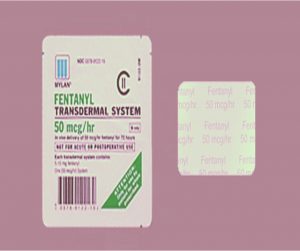Navigation:
[vc_row][vc_column][vc_cta h2="Help Is Only A Phone Call Away" txt_align="center" shape="round" style="flat" color="vista-blue" el_width="sm" use_custom_fonts_h2="true" use_custom_fonts_h4="true"]Call Now 855-227-9535[/vc_cta] Fentanyl is a helpful medication for those who are struggling with severe pain. But the drug is also very potent and has a high potential for abuse. And so it is important to understand how it works and what it does to the body. On this article, we will be discussing one common form of Fentanyl: the transdermal patch. It is another method of administration that has its own set of advantages and disadvantages. Let’s take a closer look.Why Are Fentanyl patches prescribed?
 Fentanyl patches are the same as Fentanyl that is taken orally. They can relieve severe pain including cancer pain, post-surgical pain, and traumatic pain. The difference is that the transdermal patch creates a longer-lasting effect. This is used for those who need round-the-clock pain relief, particularly people who cannot be treated with other medications. As a narcotic, Fentanyl has a tendency to cause addiction, especially if the user is not taking it properly. Narcotics induce euphoria, which gets people hooked if they take larger doses. They work by changing the way the brain responds to pain.
Fentanyl patches are the same as Fentanyl that is taken orally. They can relieve severe pain including cancer pain, post-surgical pain, and traumatic pain. The difference is that the transdermal patch creates a longer-lasting effect. This is used for those who need round-the-clock pain relief, particularly people who cannot be treated with other medications. As a narcotic, Fentanyl has a tendency to cause addiction, especially if the user is not taking it properly. Narcotics induce euphoria, which gets people hooked if they take larger doses. They work by changing the way the brain responds to pain.
How is it Used?
Transdermal Fentanyl is a patch that is applied to the skin. This is usually done every 72 hours, but it depends on what your doctor tells you. The general rule is to change the patch around the same time of day every time you need to change it. Follow the directions on the prescription label carefully, and ask your doctor if there’s anything you don’t understand. Sometimes the doctor will start off their patients with a low dose of Fentanyl and then gradually increase the dosage with each patch. If side effects occur, the doctor may decrease your dose. Always tell your doctor about any side effects you encounter while using the Fentanyl patches. Do not place the patches in your mouth. It is only meant for use on the skin. Also, do not stop using Fentanyl patches without telling your doctor about it. Usually, they have to gradually lower your dosage before letting you stop completely. This is because all narcotics may cause withdrawal effects if you stop using them suddenly.What are the Side Effects of this Medication?
Fentanyl patches may cause side effects. Tell your doctor if you experience symptoms like headaches, depression, moodiness, drowsiness, sleeping difficulties, trembling, physical pain, numbness, dry mouth, stomach pain, back pain, indigestion, and skin irritation. Symptoms that are severe or won’t go away should be reported to the physician immediately. [maxbutton id="2" ] While Fentanyl patches are generally safe, they can also cause serious side effects in some people. Seek medical care right away if the user experiences symptoms like changes in heartbeat, agitation, nausea, vomiting, hallucinations, fever, confusion, shivering, severe muscle stiffness, twitching, chest pain, rashes, hives, seizures, and breathing difficulties. It is possible to overdose on Fentanyl, even with the transdermal patches. It may cause severe health effects like extreme sleepiness, difficulty thinking, dizziness, and loss of consciousness. This is why it is necessary to follow the doctor’s prescription carefully. Fentanyl, even in its transdermal form, may be habit-forming. Using it incorrectly can lead to drug addiction and dependence. Look for an addiction treatment facility near you if you know someone who is abusing this opioid.
The featured post What is a Fentanyl Patch? Find more on: https://www.rehabnear.me/
from
https://www.rehabnear.me/fentanyl-patch/

No comments:
Post a Comment